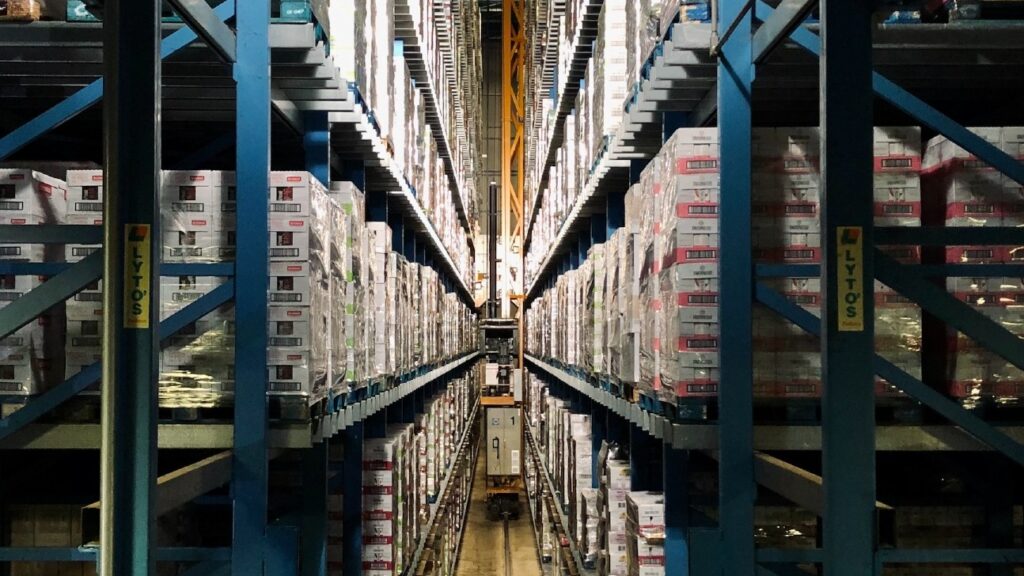4 Common Problems In The Logistics Industry & How To Overcome Them
The logistics industry is enormous and incredibly important to the US and the global economy. The logistics industry facilitates the movement of goods and services from producers to consumers.
According to recent estimates, the logistics industry ranges from $8 trillion to $12 trillion in annual revenue, contributing 10% to the US GDP and 12% to the global GDP. With an industry this large, it’s unsurprising that a few common logistics issues could benefit from being fixed.
In this article, the team at Pillow Logistics, a logistics company in Indianapolis, will explore some of the most common problems faced by logistics companies and provide practical solutions to overcome them.
Despite the challenges, our company has successfully navigated logistics issues and found effective solutions. It’s important to share our knowledge and educate others on how to overcome similar obstacles.
What Are Four Common Logistics Problems And Solutions?
Although there are more than four logistics challenges that need solutions, we’ve rounded up the most important problems in logistics that, when resolved, can lead to smoother, more timely, and more efficient deliveries.
Rising Transportation Costs
Rising transportation costs pose a significant challenge in the logistics industry. Unfortunately, fluctuating fuel prices, driver shortages, increased regulations, and infrastructure constraints contribute to the upward trend of fuel prices, much to the dismay of delivery companies.
This is because, as transportation plays a pivotal role in the supply chain, these escalating fuel costs negatively impact profit margins for logistics companies and their customers.
According to leading logistics personnel, businesses must adopt strategic measures to mitigate the effects of rising transportation expenses, as the logistics industry heavily relies on transportation and is nothing without it.
How to Overcome It
- Route optimization: Use route optimization software to identify the most efficient route for your shipments. Route optimization can assist with reducing fuel consumption and overall transportation costs, like unnecessary tolls.
- Collaborative shipping: Collaborative shipping arrangements can be mutually beneficial, especially for businesses with complementary distribution networks. Partnering with other companies to share transportation will help reduce resources and costs.
- Negotiate with carriers: Building strong relationships with carriers can often lead to long-term cost savings. Regularly negotiating with transportation carriers gives you a better chance of securing favorable rates and terms.

Technological Limitations
While technology has revolutionized the logistics industry, it also brings its share of challenges.
Some of the most pressing challenges include integration complexities, data security concerns, and the high cost of installing new tech.
Unfortunately, these limitations can hinder the adoption of advanced solutions, impeding companies from fully leveraging the benefits of automation, real-time tracking, and data analytics. This can cause severe setbacks and lead to loss of profits, which is why solutions are needed.
How to Overcome It
- Invest in robust IT infrastructure: It’s best to prioritize investments in robust IT infrastructure to support the seamless integration of different systems and data security solutions as they become available. In addition, cloud-based solutions can offer scalability and cost-effectiveness in the long run as your business grows.
- Training and upskilling: Although it might be costly, it’s crucial to provide regular training and upskilling opportunities to your staff to ensure they can effectively operate and leverage new technologies as they are introduced in the workplace. This will improve productivity and reduce potential logistics errors.
- Testing before implementation: Implementing new system upgrades and tech without testing it first does more harm than good. That’s why conducting thorough pilot tests is vital to identify and address potential issues or limitations before implementing new technologies across your entire organization.
Supply Chain Disruptions
Based on industry data, one of the primary challenges in the logistics industry is supply chain disruptions. Various factors, including natural disasters, geopolitical conflicts, labor strikes, and unexpected demand fluctuations, can cause these disruptions.
The negative impact of supply chain disruptions can be far-reaching, leading to delays, increased costs, and dissatisfied customers, which all signal trouble for a logistics company.
How to Overcome It
- Diversify suppliers: Relying on a single supplier can make your logistics operations vulnerable to disruptions. To solve this issue, consider diversifying your supplier base, both geographically and in terms of product sources, to minimize the impact of disruptions.
- Create contingency plans: All logistics companies should develop comprehensive contingency plans that outline steps to take in emergencies. These plans should involve alternate transportation routes, backup storage facilities, and communication protocols with stakeholders. Doing this will save time and money in the long run.
- Real-time monitoring: One of the best solutions to supply chain disruptions is to implement real-time tracking and monitoring systems. These systems can closely monitor your shipments. This will allow you to detect potential disruptions early and take timely action to mitigate their impact.

Inventory Management Challenges
Inventory management challenges pose a significant problem in the logistics industry. Balancing optimal inventory levels to meet customer demands while minimizing carrying costs can be complex.
If not managed correctly, inefficient inventory control can lead to overstocking, which ties up capital and increases the risk of obsolescence. Additionally, inadequate inventory levels can result in stockouts, leading to lost sales and dissatisfied customers.
How to Overcome It
- Adopt inventory management software: You can introduce inventory management software to automate and optimize inventory control within the frameworks of your business. Introducing inventory management software will enable real-time tracking, demand forecasting, and automatic stock replenishment.
- Embrace the Just-In-Time (JIT) approach: Many companies benefit from utilizing the JIT inventory management approach to minimize excess inventory by receiving goods only when needed. JIT can help reduce storage costs and improve inventory turnover.
- Conduct regular audits: Conducting regular audits to identify slow-moving or obsolete inventory will put money back into your pocket. When you know what stock is slowly moving, you can liquidate it or offer promotions to help clear space and prevent losses.
Speak With Pillow Logistics To Arrange Delivery Services That Avoid These Common Logistics Challenges
The logistics industry faces numerous challenges, but these obstacles can be overcome with the right strategies and solutions, like those discussed in our article. If you would like to utilize the services of an Indiana logistics company that has addressed these issues, consider Pillow Logistics.
Our company has taken great lengths to ensure we can provide the best service possible. You can contact us, and one of our representatives will help you narrow down your logistics needs.

